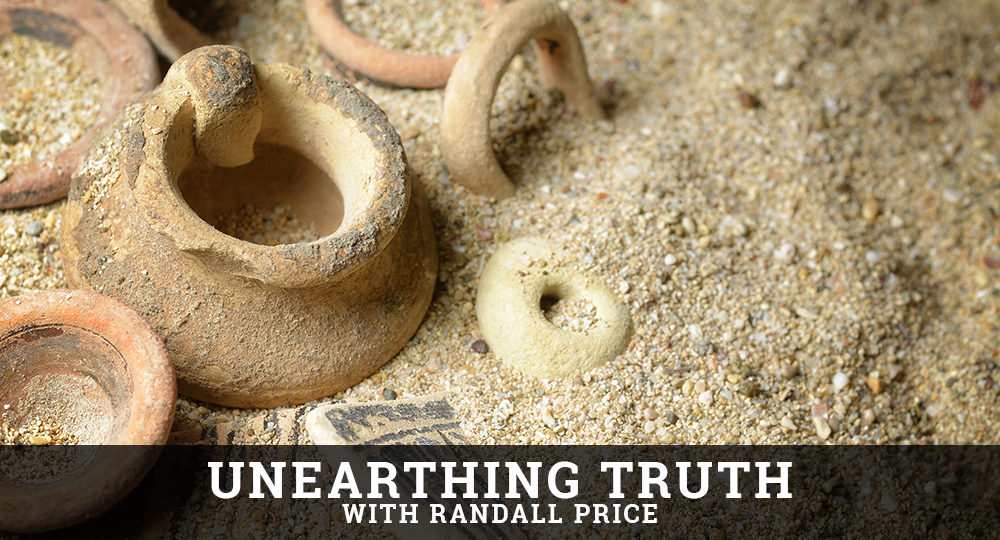The Identity of Nimrod
Archaeological excavations in ancient Mesopotamia reveal striking parallels between the Bible’s King Nimrod and the ancient Semitic ruler Sargon the Great, thus confirming the biblical king’s historicity.
The Old Testament mentions Nimrod four times, calling him “a mighty one on the earth” (Gen. 10:8; 1 Chr. 1:10); “a mighty hunter before the LORD” (Gen. 10:9); and the founder of the Assyrian Empire (Mic. 5:6). But who was he?
The ancient Jewish writers Philo of Alexandria and Flavius Josephus suggested Nimrod was a giant who opposed God1 and the tyrant behind the construction of the Tower of Babel (respectively).2 Genesis 10:10–12 includes within Nimrod’s kingdom the Sumerian cities of Babel and Uruk (Erech); the city of Akkad (Accad) in “the land of Shinar” (southern Mesopotamia/Babylonia); and the Assyrian cities of Nineveh, Resen, and Calah. Archaeologists have uncovered the remains of some of these cities, which have helped them identify Nimrod.
Nimrod built his extensive empire from south to north, indicating a third-millennium BC setting (3000–2000 BC). Therefore, he must have ruled in this region during this period. Egyptologist Douglas Petrovich argues that Sargon the Great, who built the first cities of Sumer and Akkad, best fits the historical data for five reasons:
First, both Nimrod and Sargon came from the same region. Nimrod’s origin in Cush matches Sargon’s origin in Sumerian Kish. Both peoples and territories were named after Cush (Kish), Noah’s grandson. The Sumerian King List names Kish as the first city on which “kingship was [again] lowered from heaven” after the flood and says it became the leading city of Sumer, facts later confirmed by archaeological excavations.
Second, both Nimrod and Sargon made Akkad a prominent city. Although scholars don’t know the exact location of Akkad, ancient texts place it in Babylon and Kish and suggest it became prominent once Sargon made it his capital and restored Kish. From Akkad, Sargon conquered Mari, Ebla, and Assyria.
The archaeological record fits with the biblical record of Nimrod’s location in Sumer and his conquests of Uruk—the center of power in Mesopotamia—and Akkad, from which he extended his rule north (Gen. 10:10–11).
Third, both Nimrod and Sargon initiated building projects in Assyria. The Bible reveals Nimrod built the principal cities of Assyria (vv. 11–12). Archaeological discoveries in Nippur (an ancient city in Mesopotamia) credit the same feat to Sargon.
Archaeologists have discovered inscriptions of Sargon’s rule on monuments of native governors in the Assyrian cities of Ashur and Nineveh. They also found the remains of a statue dating to the reign of Manishtushu, Sargon’s second son and successor. Since history records Manishtushu as a less powerful figure, his attaining such stature strongly implies his father had seized power in Ashur. Additional excavations also support the fact of Sargon’s mastery in Assyria.
Fourth, both Nimrod and Sargon created a lasting influence on Assyria. The Bible indicates Nimrod’s exploits indelibly impacted the Israelites, since the prophet Micah equated the “land of Assyria” with “the land of Nimrod” (Mic. 5:6). In like manner, Sargon left an abiding influence on Assyrian culture by introducing the Eponym dating system, used throughout the history of Assyria.
Fifth, both Nimrod and Sargon were legendary for their military exploits. Genesis 10:9 calls Nimrod a “mighty hunter before the LORD,” indicating God observed—not approved of—his military exploits. “Therefore it is said, ‘Like Nimrod, the mighty hunter before the LORD.’” His reputation may have extended to successive generations (v. 9). Palace reliefs discovered in ancient Nineveh display the hunting exploits and military conquests of Assyrian kings.
Ancient steles reveal Sargon also was renowned for his military conquests, such as those recorded in his Stele of Ishtar, his Victory Stele, and the Manishtushu Obelisk. These steles, which embody only a small part of the mass of archaeological evidence concerning Akkadian military brutality, sufficiently show Sargon’s reputation in this regard.
Overall, archaeological excavations in ancient Mesopotamia provide historical evidence for Nimrod’s identity as Sargon, once again confirming the Bible rests on a solid, historical foundation.
ENDNOTES
- Philo of Alexandria Quaestiones et Solutiones in Genesim (QG) 2.82.
- Josephus Antiquities of the Jews 1.113–114.








